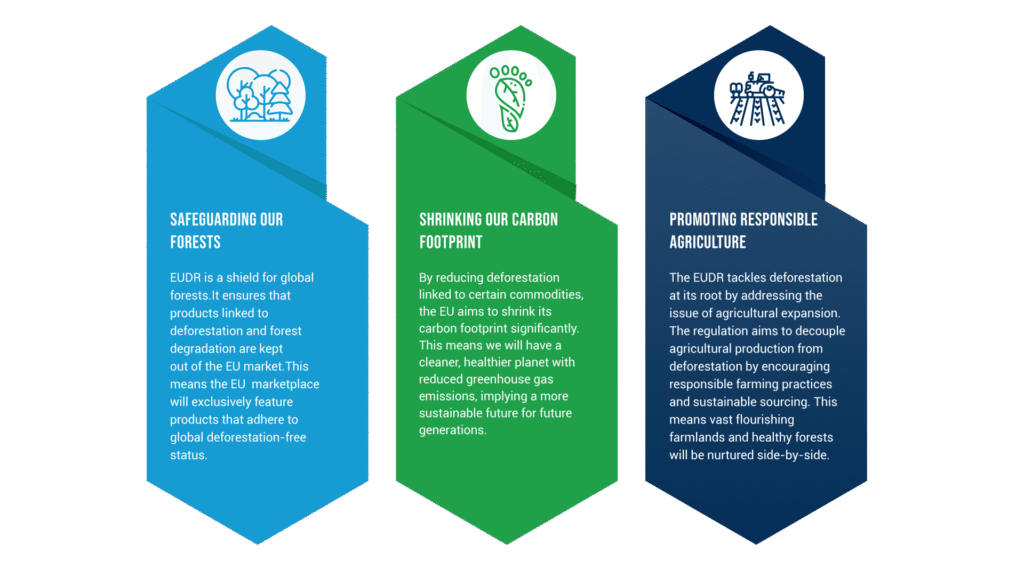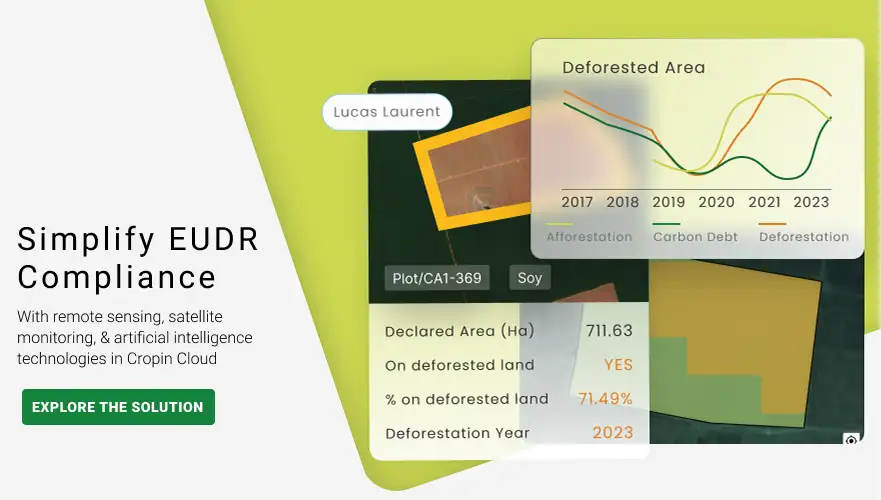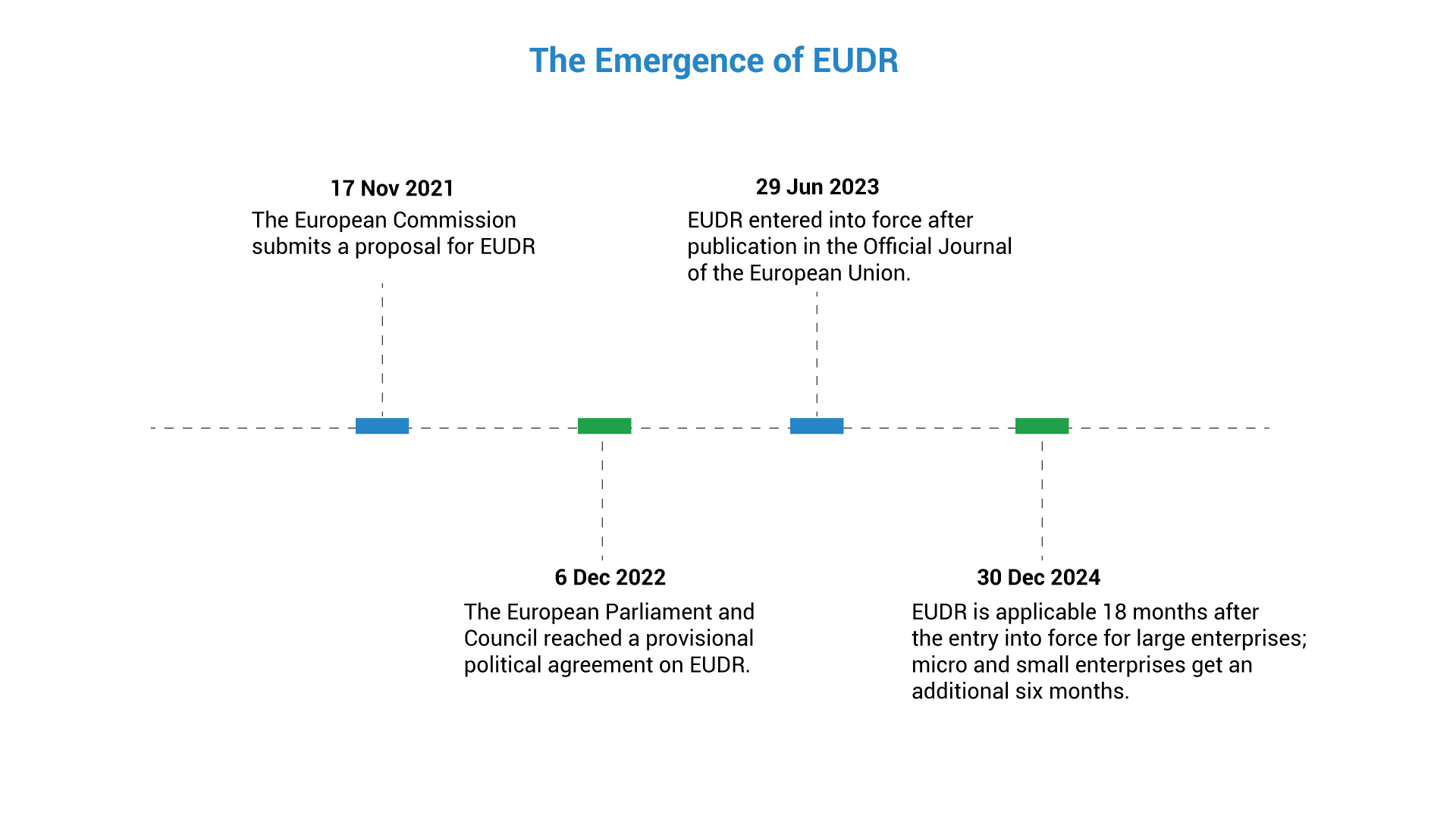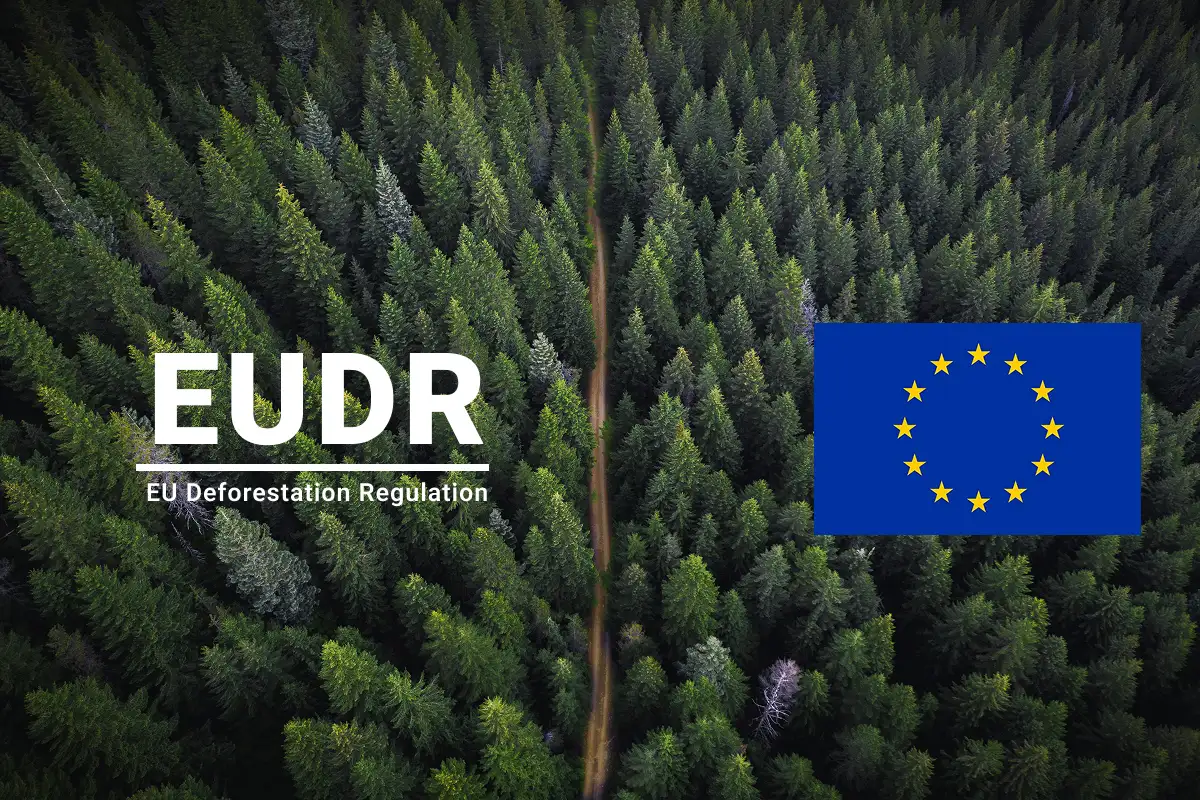Quick Summary: Explore the European Union Deforestation Regulation (EUDR) and decode its goals, timelines, commodities covered, applicability, due diligence requirements, and penalties for non-compliance. Uncover the significance of digital traceability solutions to ensure streamlined adherence.
Forests, home to over 80% of the global land animals, plants, and insect species, are vital to mitigating climate change. Their ability to sequester carbon from the atmosphere is essential for reducing greenhouse effects, as absorb a net 7.6 billion metric tons of CO2 every year. In addition, forests support the sustenance of rivers and are a natural buffer against the impact of floods and storms. They also provide food, shelter, and livelihoods to millions of people dependent on them.
The European Union (EU) recognizes its role as a major consumer of certain commodities and aims to lead deforestation mitigation efforts. This blog aims to demystify the new European Union Deforestation Regulation (EUDR).
Goals of european union deforestation regulation (EUDR)
The EUDR, designed as a powerful tool for positive change, paves the way for a future where our forests are protected, our planet is greener, and consumption is responsible.

The European Union has implemented the EUDR – a groundbreaking regulation with three ambitious yet positive objectives:
Safeguarding Our Forests: EUDR is a shield for global forests. It ensures that products linked to deforestation and forest degradation are kept out of the EU market. This means the EU marketplace will exclusively feature products that adhere to global deforestation-free status.
Shrinking our Carbon Footprint: By reducing deforestation linked to certain commodities, the EU aims to shrink its carbon footprint significantly. This means we will have a cleaner, healthier planet with reduced greenhouse gas emissions, implying a more sustainable future for future generations.
Promoting Responsible Agriculture: The EUDR tackles deforestation at its root by addressing the issue of agricultural expansion. The regulation aims to decouple agricultural production from deforestation by encouraging responsible farming practices and sustainable sourcing. This means vast flourishing farmlands and healthy forests will be nurtured side-by-side.

The EUDR due diligence mandates risk assessment, traceability, mapping, risk mitigation, supplier engagement, and compliance reporting to achieve this. We will dive deep into it later in the blog.
Emergence of EUDR
Undoubtedly, the importance of forests in achieving the Paris Agreement’s goal of limiting global warming to 1.5°C above pre-industrial levels cannot be overstated. In the last decade alone, the Earth lost 4 million hectares of primary forests annually, and nearly 12 million hectares of forest are destroyed each year.

All you need to know about EUDR
EUDR aims to curb the EU market’s impact on forest degradation and deforestation by regulating companies placing certain products on the EU market. Here are some key things companies need to know.
Who does the EUDR apply to?
The EUDR regulation places a crucial responsibility on operators and traders to ensure that relevant commodities are sourced deforestation-free, preserving the integrity of forests and preventing forest degradation. The EUDR applies to businesses placing certain commodities on the EU market and products derived from them.
Which items are covered under EUDR?
EUDR cover the following seven commodities that represent the largest share of EU-driven deforestation:
- Cattle
- Cocoa
- Coffee
- Palm-oil
- Rubber
- Soy
- Wood
Who does the EUDR apply to?
The regulation applies to all companies, regardless of their location within the EU or elsewhere, and it pertains to legal and illegal deforestation sources occurring within Europe or beyond. This means that even if the commodity was produced outside the EU but enters the EU market, it falls under the EUDR’s purview. The companies are responsible for conducting due diligence and ensuring the product is deforestation-free.
What are the EUDR timelines?
EUDR applies to goods produced on or after 29 Jun 2023 (except for timber and timber products). This marks the start of the transition period. The Regulation defines a product as deforestation-free when the product, its ingredients, or its derivatives were produced on deforestation-free land after the cut-off date of 31 December 2020. This cut-off date has been suggested to minimize disruption to international supply chains.
Although the EUDR is in force, operators and traders have until 30 December 2024 to implement the new rules and due diligence process. Micro and small enterprises have until 30 June 2025 to comply with EUDR.
What does due diligence in EUDR entail?
Under the EUDR, companies must implement a risk management system to identify, assess, mitigate, and monitor deforestation risks in their supply chains. This includes:
- Mapping their supply chains – descriptions, quantity, geolocation of production
- Identifying deforestation risks in sourcing areas and mitigating identified risks
- Gathering information from suppliers about their production practices
- Establishing and maintaining a due diligence system, reviewing it regularly, and publicly reporting on the due diligence process
- Monitoring the effectiveness of their due diligence efforts
- Maintaining records of due diligence-related documentation for at least five years
What are the consequences of non-compliance to EUDR?
Companies that fail to comply with the EUDR face hefty fines of up to 4% of their annual turnover. Additionally, their products may be barred from entering the EU market. SMEs may have certain exemptions and simplified due diligence procedures for relevant products that have already undergone due diligence.
Streamline due diligence & EUDR compliance with Cropin cloud
Embracing digitalization in the due diligence process represents the most robust approach to EUDR compliance, streamlining the already cumbersome efforts in compliance. Partner with Cropin Cloud helps navigate the complexities of EUDR compliance in agriculture through:
- Real-Time Monitoring and Traceability
- Categorizing Deforestation
- Acreage Overlap Analysis
- Data-Driven Insights and Compliance Reporting
- Year Identification
- Enhanced Communication and timely action alerts
- Ease of Deployment and Scalability
Cropin’s solution not only aligns with basic compliance requirements but also offers advanced features for an in-depth understanding of deforestation trends and impacts, ensuring businesses meet their compliance norms comprehensively.








